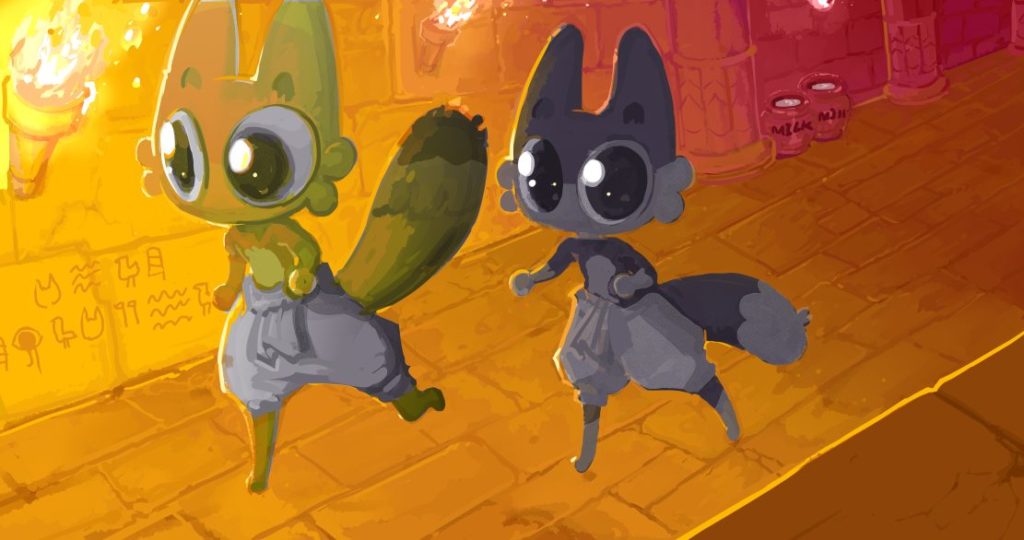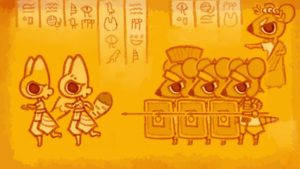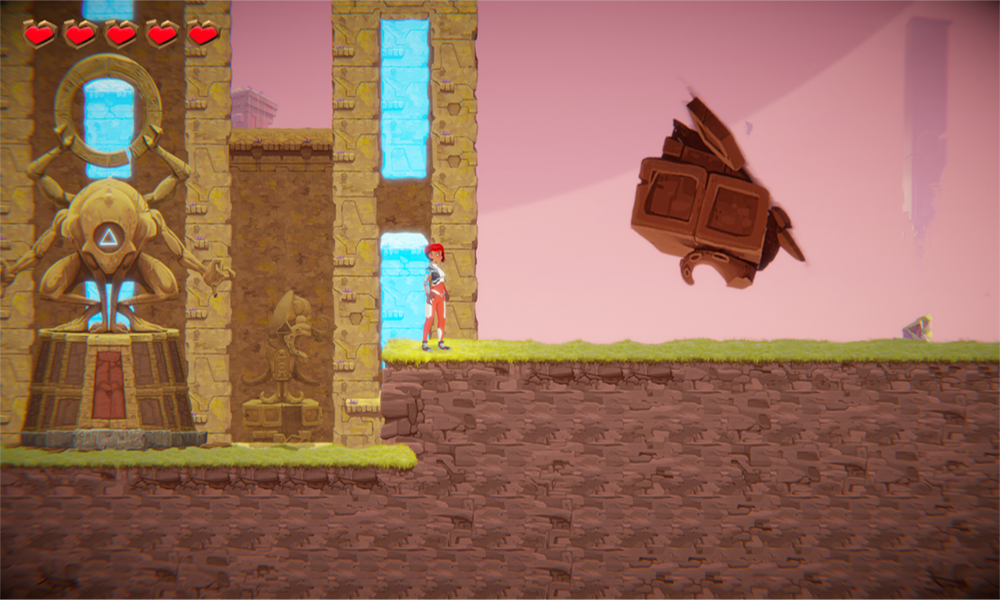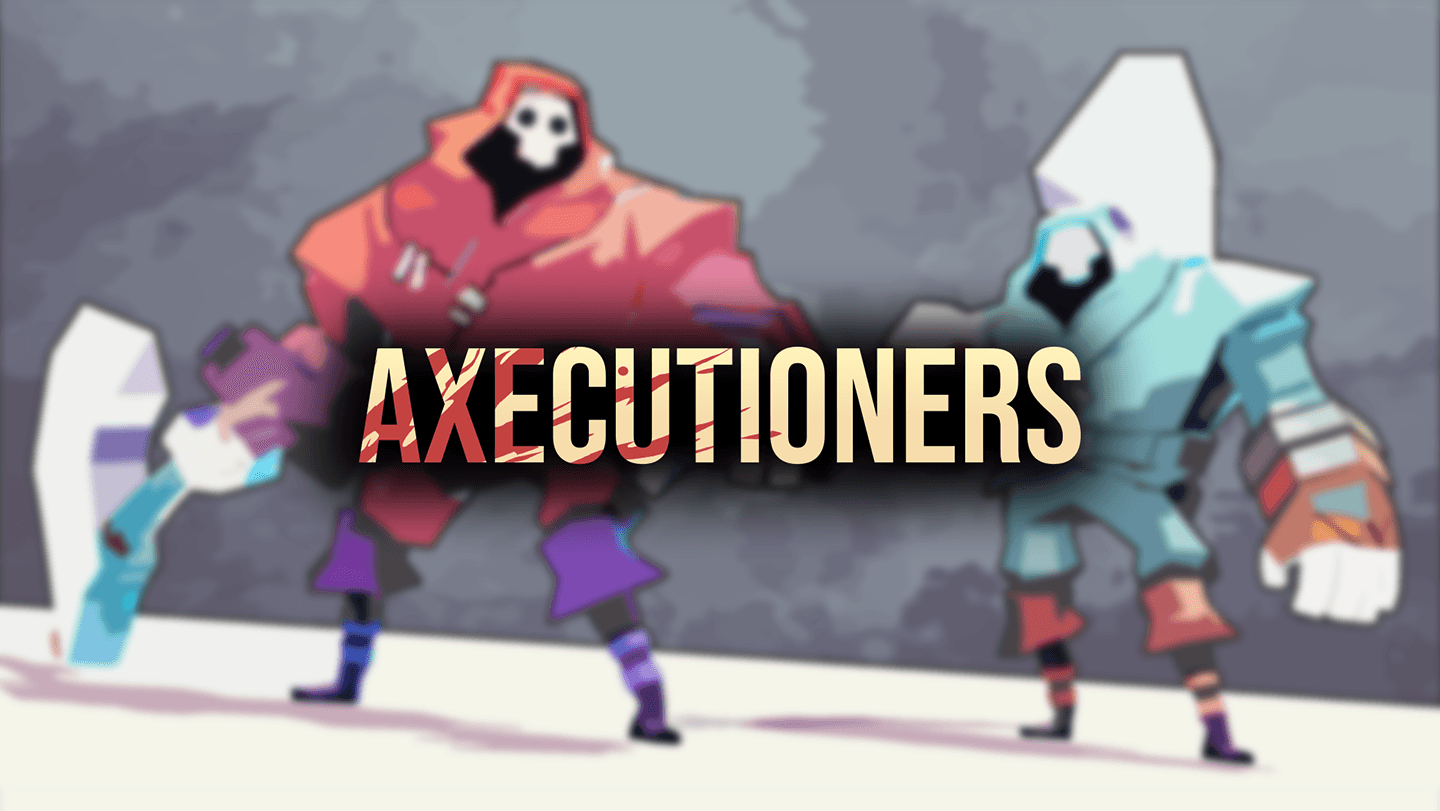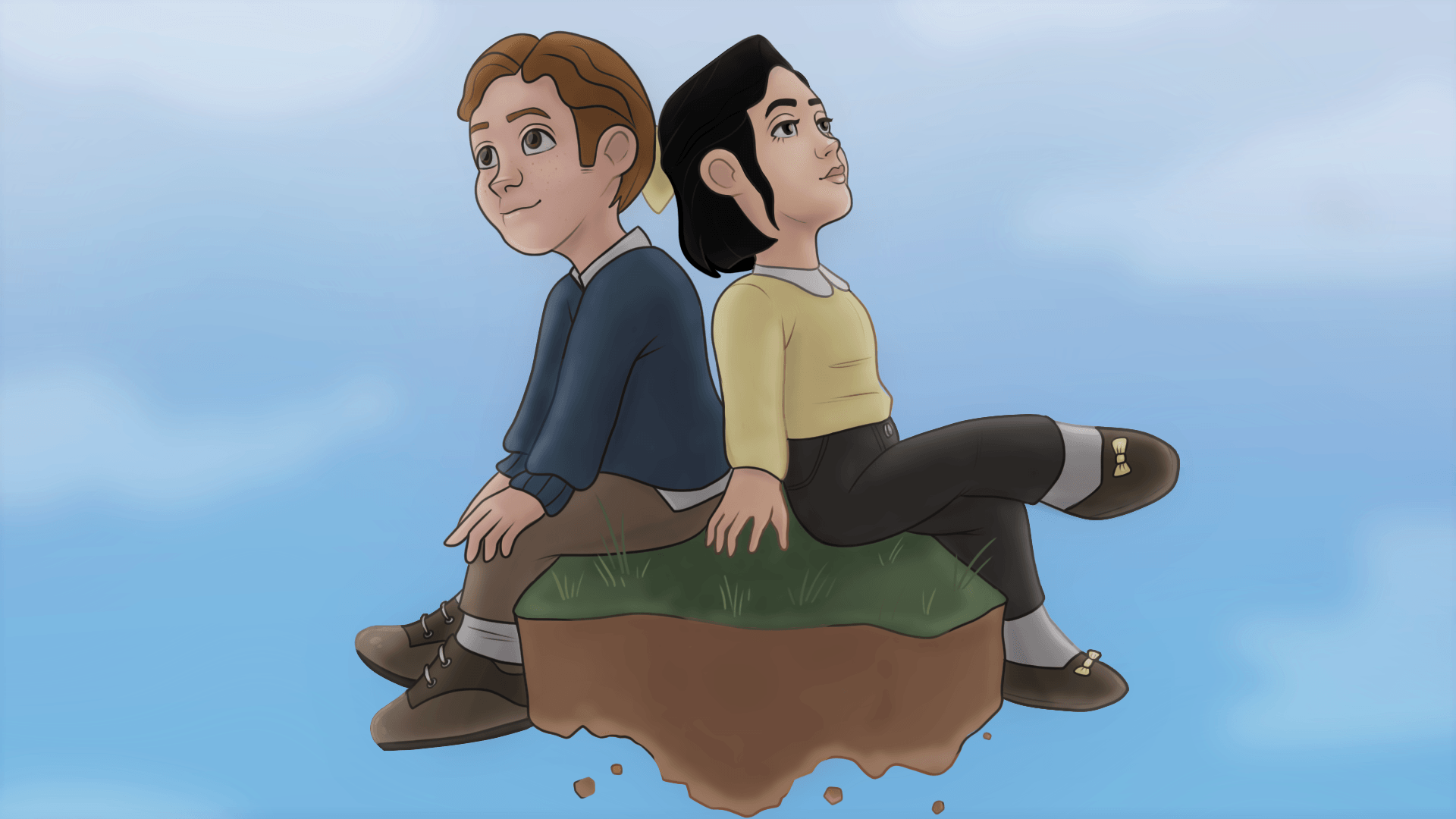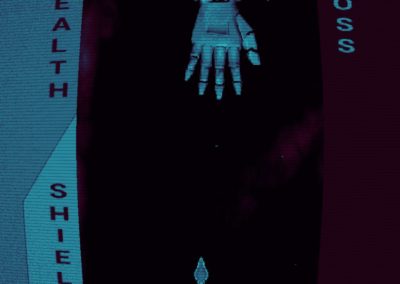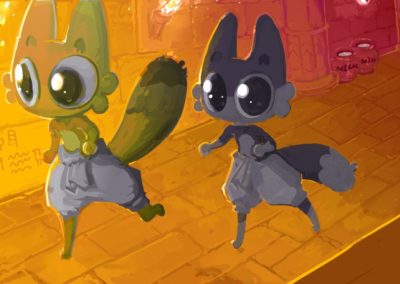My Contributions to the Project
A brief bulleted list of things I worked on or created during my time on this project. Feel free to click the plus signs if you’re interested in more details about certain entries.
Technical Design: Revising my Player Controller Script
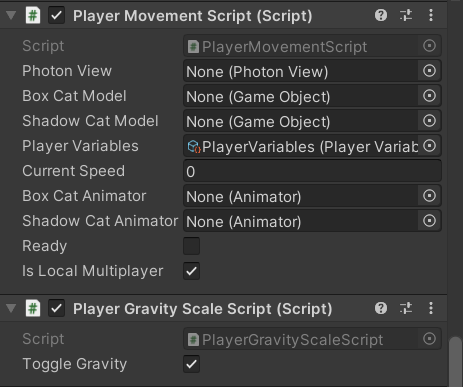

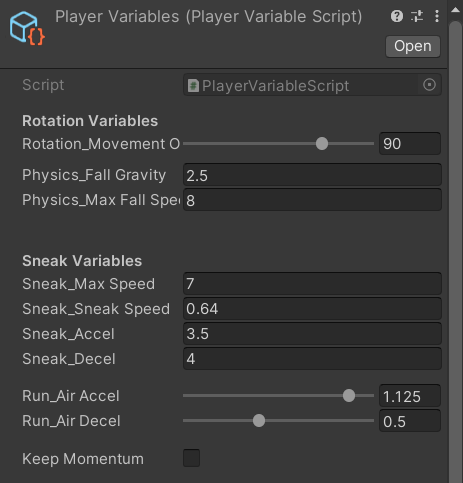 The Problem: As a stealth game, Into the Catacombs needed a movement system that was fluid, satisfying, and easily tweakable by designers.
The Problem: As a stealth game, Into the Catacombs needed a movement system that was fluid, satisfying, and easily tweakable by designers.
What I Did: I further refined and modified the proprietary movement script I created for Back in My Day, migrating it to Unity’s updated input system, and separating it across different components for optimization and efficiency. Whereas the previous version of the script was a single component, there are now five separate components that link together to form the player controller: the player input component, the player state machine, the player gravity script, the player movement script, and the player variables data file. The use of a data file for the base movement variables allows easy tweaking of every instance of the player simultaneously, regardless of which object or prefab the player movement script is stored in. Additionally, I added the ability to sneak to the movement script, with functionality for acceleration, max speed, and different acceleration and deceleration rates when sneaking.
As a result of these easily-tweakable tools, testing and modifying the player’s movement was never an issue over the course of the entire project.
Pivoting and Dealing with Scope

The Problem: As the project entered its second month of development, it became clear that we had vastly underestimated the scope of the project, and the time it would take to implement many of the core features we had planned for Into the Catacombs.
What We Did: As a team, the primary features we decided to cut were the unique abilities of each player. In our initial designs, one player would have had the ability to climb walls, and blend in to the environment using shadows, while the other player would have a box they could place, hide in, and teleport to. We decided to pivot from more of a puzzle-based game with stealth elements to a fully stealth-focused experience. This would allow us to focus much more on polishing the game’s existing mechanics as much as possible before moving forward with additional design elements.
Designing Levels for Stealth
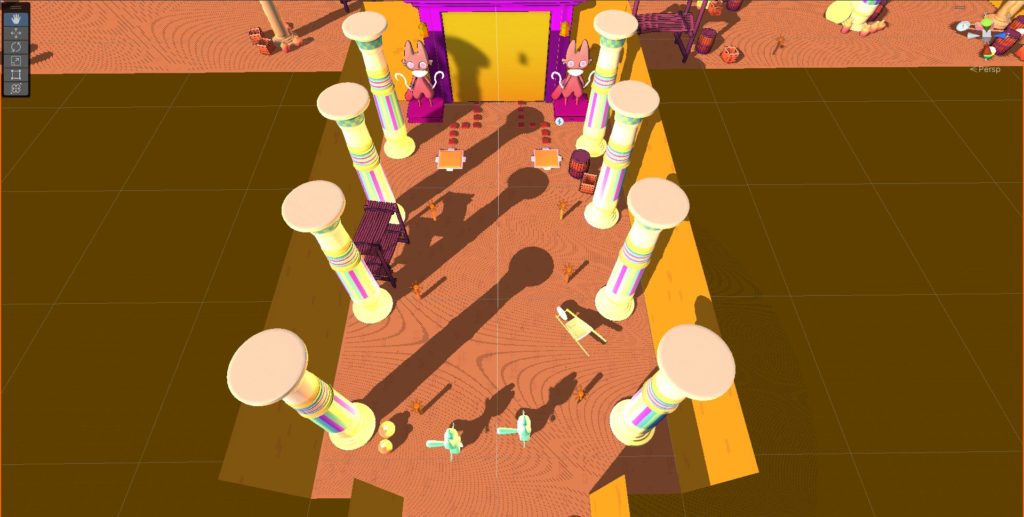
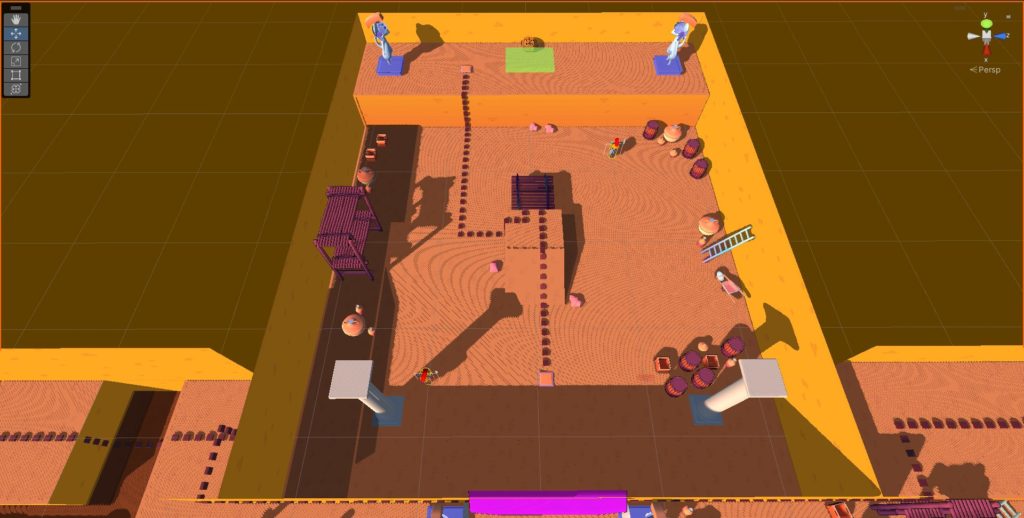
The Problem: Level Design is absolutely critical in a stealth-focused game, and as such, Into the Catacombs needed a level that would serve to teach the player the game’s mechanics in an effective and satisfying manner.

What I Did: As the game’s level designer, I went through many different iterations of a wide variety of differing level concepts before I designed the layout that can be seen in-game. Many of my initial designs focused on the introduction of the (now cut) box and shadow mechanics, and as such, they had to be scrapped midway through development. The layout seen above is my fourth design of the game’s first level after weeks of iteration. I tried to focus on teaching the player as much as possible about the game’s stealth system, while keeping a few of the puzzle mechanics from its earlier versions, while challenging them along the way.
Dynamic Music for a Stealth Game
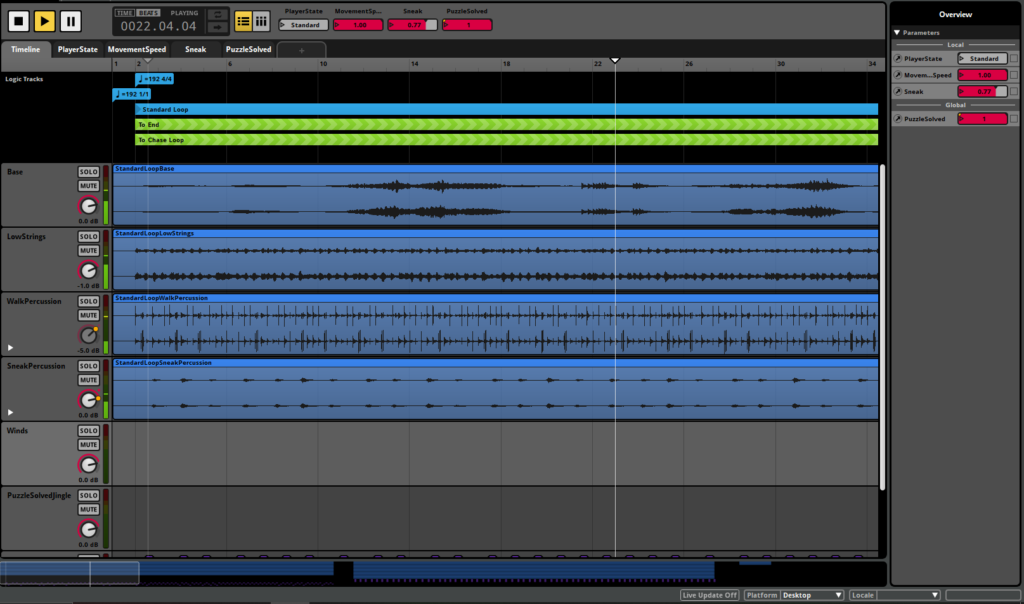 The Problem: Audio was especially important consideration when making a stealth game like Into the Catacombs, and as a result, the team decided that the game needed some form of dynamic music system to properly inform the player of their surroundings through audio.
The Problem: Audio was especially important consideration when making a stealth game like Into the Catacombs, and as a result, the team decided that the game needed some form of dynamic music system to properly inform the player of their surroundings through audio.
What I Did: As the game’s level designer and audio designer, I had only a few days to create and implement all of the game’s audio and music systems, as I had only finished with the level design process fairly late into the project. Regardless, after doing research into traditional and ancient middle eastern music, I was thoroughly inspired, to the point of being able to compose, mix, master, and implement two full dynamic orchestral pieces into the game using FMOD in just under 48 hours. I’m especially proud of the music’s frequent use of odd time signatures, giving the player a constant sense of unease as they sneak around.
Released
December 2022
Platform
Itch.io
Team Size
8
Blog posts featuring Into the Catacombs
One of my favorite things about being a game developer and an audio designer is getting to share the things I learn with whoever I can. Check out some recent poste from my personal blog!
Coming Soon!
The Into the Catacombs Team

Kendrick Ng-Yow
Producer

Daniel VanRyn
Product Owner, AI Programmer

Pat Fagan
Network Programmer

Alexis Sophabmixay
Character Artist

Alina Coffey
UI/UX Artist

Alisha Bernadin
Texture/Prop Artist

Michael St. Louis
Technical Designer, Level Designer, Audio Designer

Talyn Xystus
Systems Designer, Documentation Lead





